- News
- Reviews
- Bikes
- Accessories
- Accessories - misc
- Computer mounts
- Bags
- Bar ends
- Bike bags & cases
- Bottle cages
- Bottles
- Cameras
- Car racks
- Child seats
- Computers
- Glasses
- GPS units
- Helmets
- Lights - front
- Lights - rear
- Lights - sets
- Locks
- Mirrors
- Mudguards
- Racks
- Pumps & CO2 inflators
- Puncture kits
- Reflectives
- Smart watches
- Stands and racks
- Trailers
- Clothing
- Components
- Bar tape & grips
- Bottom brackets
- Brake & gear cables
- Brake & STI levers
- Brake pads & spares
- Brakes
- Cassettes & freewheels
- Chains
- Chainsets & chainrings
- Derailleurs - front
- Derailleurs - rear
- Forks
- Gear levers & shifters
- Groupsets
- Handlebars & extensions
- Headsets
- Hubs
- Inner tubes
- Pedals
- Quick releases & skewers
- Saddles
- Seatposts
- Stems
- Wheels
- Tyres
- Health, fitness and nutrition
- Tools and workshop
- Miscellaneous
- Buyers Guides
- Features
- Forum
- Recommends
- Podcast
TECH NEWS
 Shimano Dura-Ace R9200 - Riding (CREDIT Irmo Keizer_Andreas Dobslaf)-12
Shimano Dura-Ace R9200 - Riding (CREDIT Irmo Keizer_Andreas Dobslaf)-12First ride review - Shimano Dura Ace R9200 Di2 Disc Groupset
Shimano has just launched its new flagship groupset, Dura-Ace R9200. Because someone had to we got to test it out in the sunny French Pyrenees. Here are our thoughts from those first few rides...
We'll stick mostly to the ride impressions here so if you want the tech details of the new Dura-Ace R9200, head this way.
There's new Ultegra R8100. Tech details of that are this way.
Braking
Disc brakes are, in my humble opinion, a better system for the all-weather riding that I find myself doing through the often undefined range of British seasons. I also vastly prefer them in traffic and day-to-day, I find them easier to live with. But, and it is a big ‘but’, disc brakes aren’t perfect. Get on the brakes for a few big slowdowns and Shimano’s brakes will sing a song back to you. It goes ‘tink-a-tink-a-tink…’ and it is the pistons retracting slowly, causing the rotor, which has probably gone just slightly out of line, to catch a little on the pads.
The big thing that I wanted to see with the new Dura-Ace R9200 groupset was an improvement here, and first impressions suggest that while Shimano’s top-end rotors still aren’t my favourite, the new callipers do a better job at being quiet when you come off the brakes.
Shimano has introduced its gravel and MTB ServoWave tech into the new levers; and yes, they’re in the Ultegra brakes too. This is familiar stuff to the off-road crowd, but if it's new to you then here’s the gist:
Servo Wave is essentially a roller cam that makes the lever pull non-linear. In practice, that means that as you begin to pull the lever, the pad movement is quick. Then, as the pads contact the rotor, the lever movement required for adding braking power begins to increase. This, in theory, makes the brakes quick to engage and then gives you a lot of lever travel for plenty of power modulation.
The total lever travel hasn’t changed, rather the distance that the lever will travel before the brake engages has reduced. That leaves the remaining lever travel to be used for power modulation.
With a lot of braking to be done as I sailed down various twisting Pyrenean descents, I was able to test this feature quite a bit. The lever feels nice and squishy when you really start to pull on the brakes hard, and I couldn’t help but be reminded of a well set up rim brake.
The system does indeed seem to afford you loads of control, with all of that modulation coming in very handy as I butchered my lines through some tighter hairpins.
Shimano has also increased the pad clearance by 10% in an effort to reduce the chance of rotor/pad contact when you come off the brakes.
It’s not all new technology incoming. The Dura-Ace rotors with their massive cooling fins are out, with Shimano’s RT-MT900 rotors making their way over from the MTB world. I was never a fan of the Dura-Ace rotors, finding them to head out of line far too easily, so I’m not breaking out the violins for their departure.
The MT900 rotors seem to be a bit better, but I was still getting a little bit of noise after really heavy braking; so I’ll be looking to switch out the rotors to my preferred choice from SwissStop, to see if the extra pad clearance has made a difference.
On the whole, though, I’d say that the improvement in the brakes that I was hoping for has been provided and that makes me very happy indeed.
Shifting
Right, well that is slowing down taken care of... but what about the headline feature? As we expected, the new groupset is 12-speed. Shimano has effectively slotted the new cog into the gap between the 15T cog and the 17T cog that exists in the 11-speed 11-28T and 11-30T cassettes. This pleased the Dutch journalists very much. Apparently, they spend a lot of time flicking between these two cogs.
Dura-Ace now has an 11-34T cassette option and this pops the new cog into the lowest gear point, the 34T.
In terms of how this all works out in the real world, the shifting is as you might expect. Things are very smooth throughout the range and the system only really makes a bit of noise when you start doing silly changes on a steep hill with a low cadence. It was pretty darn good before and it still is.
Shimano's electronic shifting has always felt a cut above their rivals in my opinion and with this new version of Di2, I think that gap has only become wider.
Shimano says that with wireless shifting comes a speed increase. The wireless signal takes a little longer than a wired signal, but then the new R9250 front and rear derailleurs supposedly compensate for this, making the system as a whole a bit faster.
My initial impressions were that the front derailleur offers the most noticeable improvement, though this is likely due to the improved power of the motor rather than the 0.148s shift speed increase. It never stuggled, even under load and it is a very impressive bit of kit.
The rear mech was more tricky to judge. We’re talking about a speed change from 0.174s to 0.075s here. I would say that it is smoother, but faster? We’re splitting hairs. The smoothness is the impressive thing in my eyes. You can be stamping on the pedals in a full-gas sprint and the shifting is mind-bogglingly unphased. Click and it will shift.
The important thing, for me anyway, is that the addition of wireless shifting hasn’t decreased shifting speed. I was more than a little annoyed when we first heard rumours that Dura-Ace could be wireless because, in my opinion, there is very little point. Yes, you can point to the fact that SRAM does it and yes, it is marginally easier to install. But how many people that can't thread a Di2 cable through a frame are going to be building their own bike? More likely, they'll be getting a shop to fit everything, negating most of the wireless benefits.
Anyway, you can still run it as a wired system and save 50% of the battery so for my bike, I'll probably be doing that. Moaning aside, Dura-Ace is still amazingly fast and a joy to use.
Sprint shifters
The original sprint shifters were brilliant. They were small and angular, so you could discreetly poke them through your bar tape and then find them easily in the chaos of a Castle Combe cat 3 bunch sprint.
The last generation tried to be too much and the plastic body meant that wrapping them neatly under your bar tape was nigh on impossible. Happily, the small, angular design is back and these are back to being brilliant add-ons that you can have on the drops or the tops.
Chain noise
The chain isn’t a new design from Shimano. Like the rotors, they’ve pinched parts from the MTB world and in comes the M9100 12-speed model.
There’s not a huge amount to be said here. Like tyre pressure having the greatest influence on ride quality, the chain lube that you use and the indexing of your gears will affect drivetrain noise more than a marginal change to the profile of a chain.
Hood ergonomics - Is bigger better?
Shimano has revised the design of the shifter with a much smoother look. The hoods are canted inwards which Shimano says is aimed at providing more comfort. Some of the pros and aero-obsessed amateurs have been turning their hoods inboard for a while now. The inwards tilt isn’t overly extreme, but I would say from a few three hour rides that the hoods are indeed very comfortable to hold.
There has also been a size increase, which Shimano claims is something that the pros asked for. That could be true, or it could be a convenient way to distract from the fact that they needed to get a CR1632 battery, a hydraulic reservoir and everything else into each shifter.
To me, they looked bigger in the spy shots that we saw from the Tour of Belgium than they actually were in real life. They’re nowhere near as big as SRAM or Campagnolo shifters, but the R9270 is certainly a taller design than the outgoing Dura-Ace R9170 shifter.
One of the features that you might not be able to spot from the pictures is that the shifter body where you wrap your fingers has been made longer, increasing by 4.6mm. This is to allow you to wrap three fingers under the shifter body for more security over rougher roads and I was easily able to get my hands around them.
Visuals
I’m split on the aesthetics, but I still haven’t really got over the move away from the silver of Dura-Ace 9000. I very much like shiny things, you see!
For me, the good points are the front of the shifters, the front mech, the clean design and the brake callipers.
I really do like the cover on the face of the shifter body. It reminds me of the first generation Di2/disc shifters with their silver cover over the bleed port. Very nice in my eyes.
The body of the front mech has shrunk considerably and I really like the compact nature. And finally, the brake callipers haven’t changed much in overall shape, but the bleed port has been redesigned and it looks far tidier with no tiny rubber cap to lose.
Then there are smaller things to consider. Shimano has removed the need for the Junction-A box as the charging port, putting this and the Junction-A’s functions into the rear derailleur. It is a small step, but it makes Dura-Ace Di2 look even cleaner than before.
Backwards compatibility: you CAN mix and match with your older wheels
The new R9200 groupset, along with Ultegra, is moving to the newer style of eTube cable that Shimano uses on its e-bikes. This is thinner, with the theory that it’ll make internal routing easier.
The new eTube cables mean that you can’t just plug old bits into the new system. And then because of the shifters using the Servo Wave tech, you won’t be able to pop the new brake callipers onto your old groupset.
For backwards compatibility with those nice wheels you bought last year, things are thankfully a lot brighter. The good news is that you can use them! I can hear the collective sigh of relief. Shimano has created a new freehub that uses more splines which is claimed to better distribute pressure from the cassette, but the good news is that the overall spline pattern on the 12-speed cassettes is the same as before.
Speaking of wheels...
Shimano has a brand new range of wheels, and I was riding the semi-deep C36. It has a rim that, as the name suggests, is 36mm deep and 21mm wide internally. These are hooked, tubeless-ready carbon clincher wheels with a claimed weight of 1,338g and they behave rather as you'd expect.
For the mountainous riding that we were doing they were ideal, with the stiffness and decently low weight combining to give that snappy feel that you really want when pretending to be in the Tour de France.
Tucked away in the centre of the wheels is a new hub that houses a new ratchet system, and also uses the new freehub spline pattern. I'll focus on the ratchet system as this is where Shimano claims to have made a 63% improvement in what it's calling 'driving rigidity'.
The internal width helped when we turned onto some of the Pyrenees' back roads. Here, I was grateful to be able to let the 28mm Vittoria Corsa G2.0 tubeless tyres down to a nice floaty pressure.
Essentially, Shimano has moved away from a pawl engagement system to two ratchet rings as you'd see inside many other brand's hubs. Shimano says that they initially intended to make the ratchets disengage entirely when you stop pedalling. That would have created a blissfully silent system but they ended up scrapping the idea to safeguard against engagement failures. The result is a very fast pickup when you pedal with a low hum when freewheeling.
Riding the new wheels on a new bike made it tough to judge their performance so I'll be keen to get the wheels onto my own bike as soon as possible. While you're sending them, Shimano, sets of the C50 and C60 would be ideal too. Thanks.
And the stuff that we need longer to test
The updated power meter wasn’t on the bike that I rode in the Pyrenees, so we'll get it tested as soon as we have one.
There is also a new brake bleeding procedure, and a few relatively new tools that claim to make bleeding your brakes a bit easier. I’m certainly happy to see the redesigned bleed port on the calliper, as the previous version was difficult to access on frames with a tight rear triangle.
Shimano has also launched some E-Tube app improvements that allow you to customise the shift functions of each button. There is no need to buy the additional EW-WU111 wireless unit anymore as the rear derailleur effectively has this built in. That is a properly useful function that I really happy to have seen Shimano add as SRAM had them easily beaten on connectivity.
The app really needed to change so we’ll start playing around with changing button functions and doing updates just as soon as we get a groupset in for full testing.
Conclusion
So, first impressions are very good. This might look like a relatively incremental update to keep up with the wireless and 12-speed competition, but there is a lot of clever tech hiding under the bonnet that, on first impressions, makes this a brilliant groupset.
Is it as big of a leap as the introduction of Di2? Certainly not. But has Shimano done the jump to wireless well? Absolutely.
The shifting has not suffered from the adoption of wireless; in fact, it has been made a bit quicker. Throw in the additional pad clearance that goes a long way to making the brakes perform flawlessly, and you’ve also got plenty of other good stuff such as the new backwards-compatible freehub standard and the hood ergonomics that are really comfortable.
We’ll dive into the murky waters of value once we’ve tested all of the features extensively, and unfortunately, you're just going to have to wait a little bit longer until we give you our full review...
Latest Comments
- chrisonabike 1 hour 22 min ago
If you're feeling a bit dystopian - the stand will be useless because nobody cycles....
- Rendel Harris 1 hour 52 min ago
Wasn't her quote something like "Any man who takes the bus after the age of twenty-five [maybe thirty?] is a failure?...
- andystow 4 hours 43 min ago
Based on my experience with the Hunt wheels, I might do a review on their durability in three or four years.
- Destroyer666 9 hours 9 min ago
"...the beeswax-based covering magically shuns off whatever might be lurking in the corners. Even after multiple rides, when the bars rattled about...
- David9694 10 hours 32 min ago
t-boned
- Rendel Harris 11 hours 52 min ago
I didn't know the blue RA saddle was a holy grail - I had a 1986 RA bought new in 1987 with a blue saddle that lasted me very well until 2002 when...
- newbankgyratory 12 hours 2 min ago
Solution: Put these up everywhere. Source: https://www.gov.uk/guidance/the-highway-code/traffic-signs
- Rendel Harris 12 hours 59 min ago
Glad you like it - this week was the first proper commuting week since I got it, 250kms nice and warm but not boiled, indeed - and when the...
- Rendel Harris 14 hours 32 min ago
As what you have said is demonstrably untrue, given that the event is organised and has been for the last four years by a professional events...
- Steve K 16 hours 16 min ago
I'm there now too, if anyone wants a follow/wants to follow me. @cyclingtheseaso
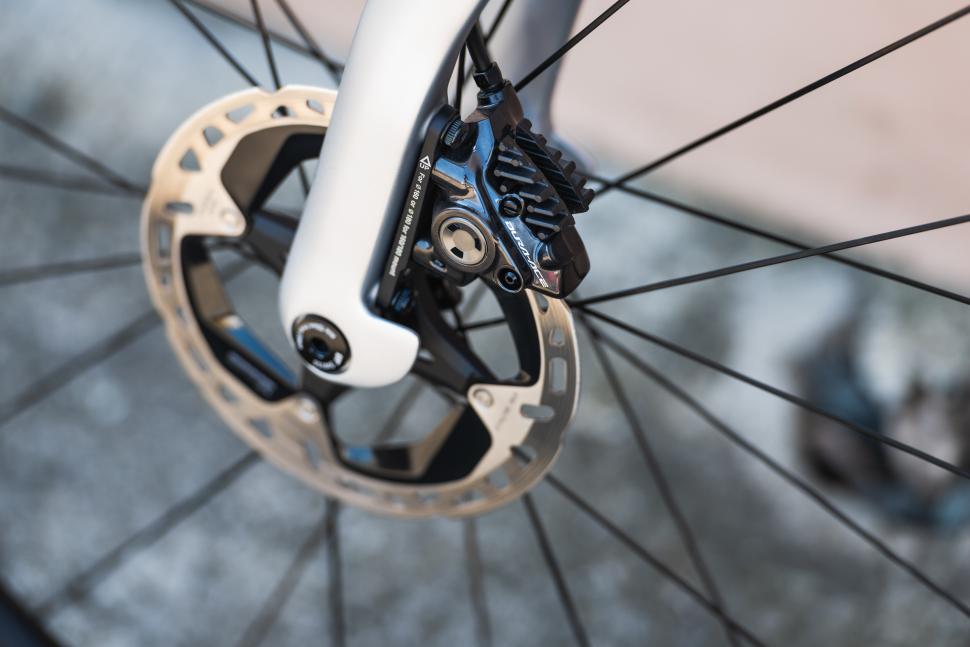

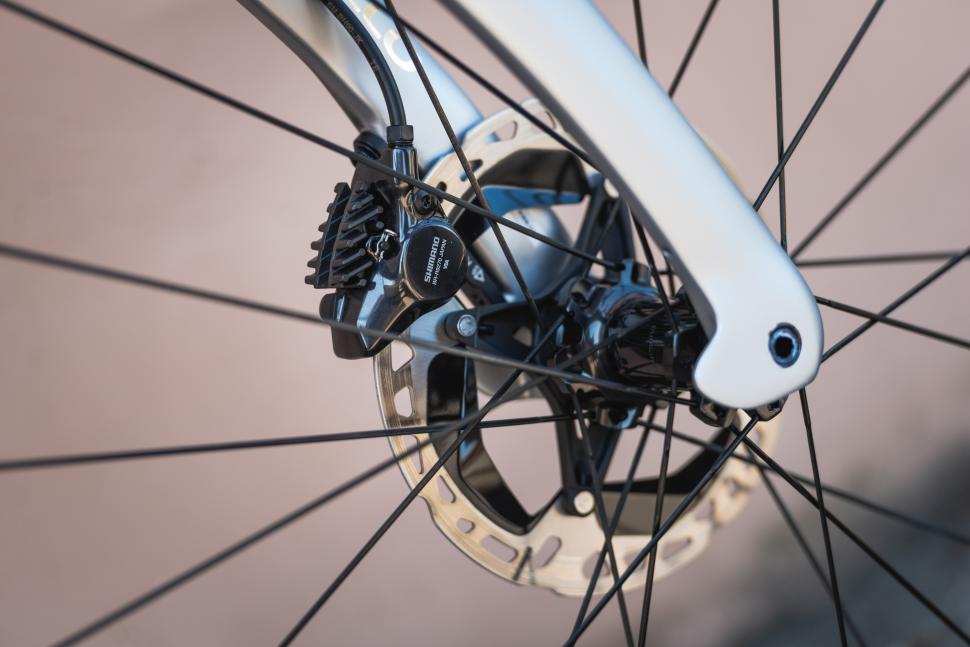

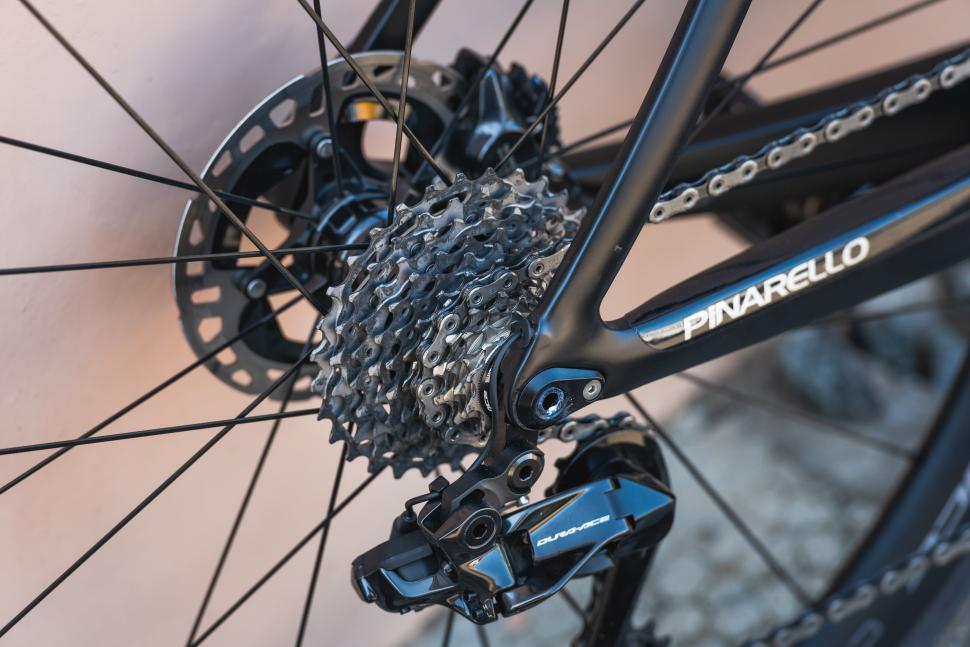
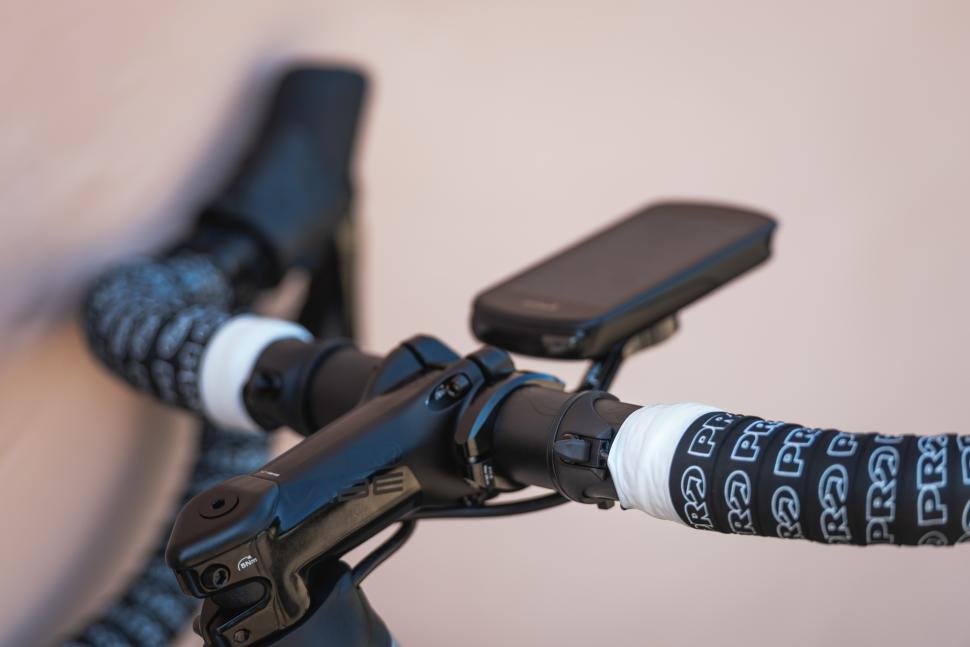
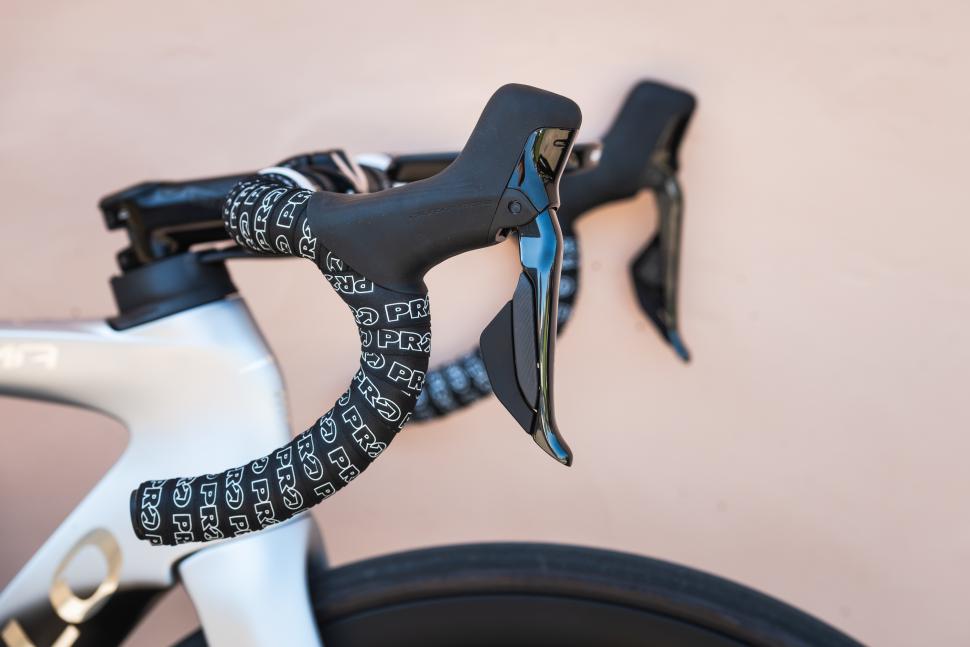

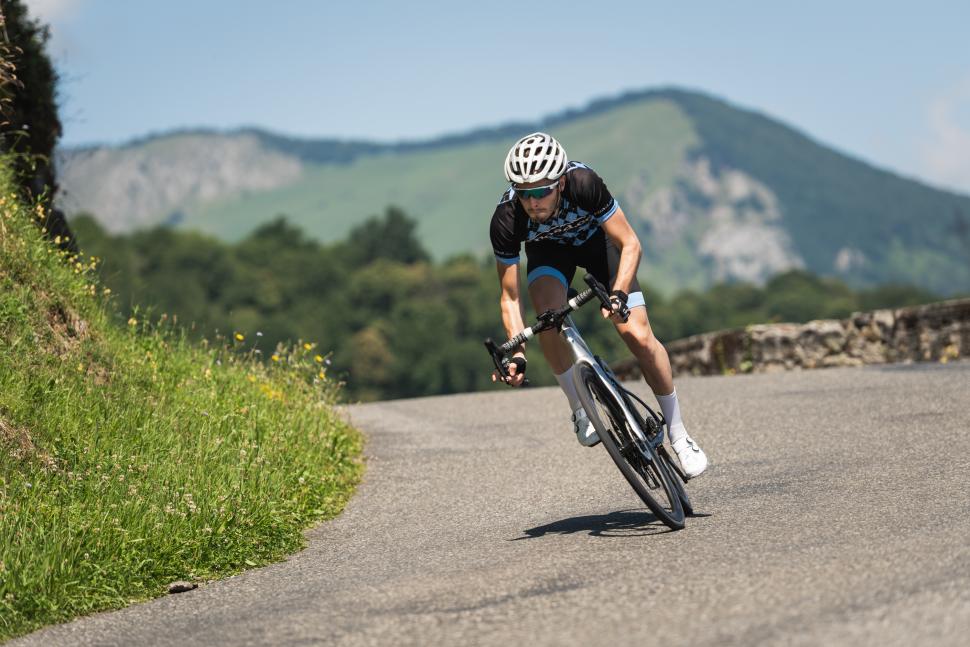
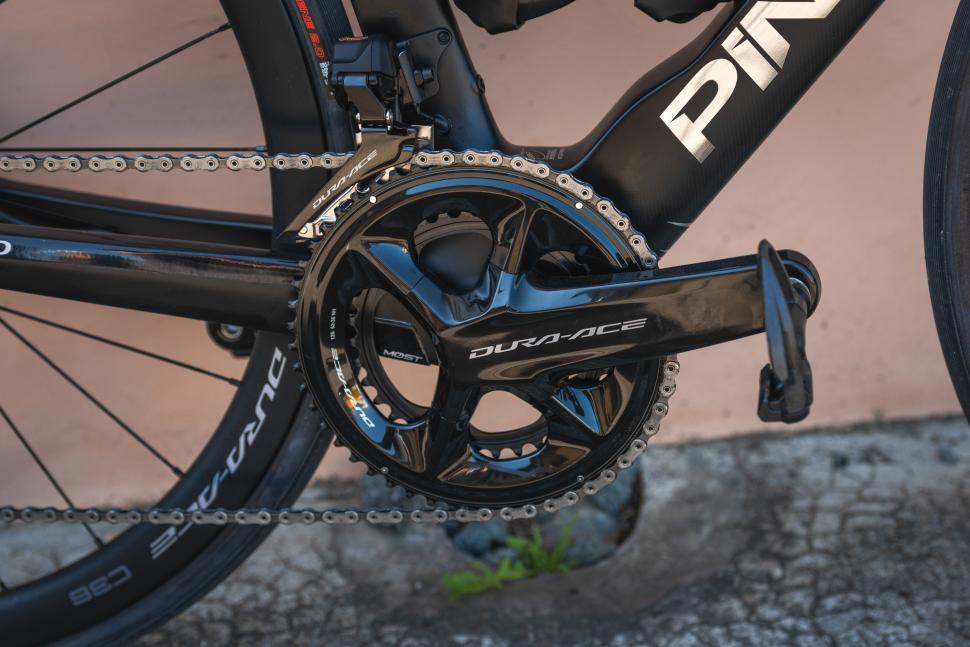

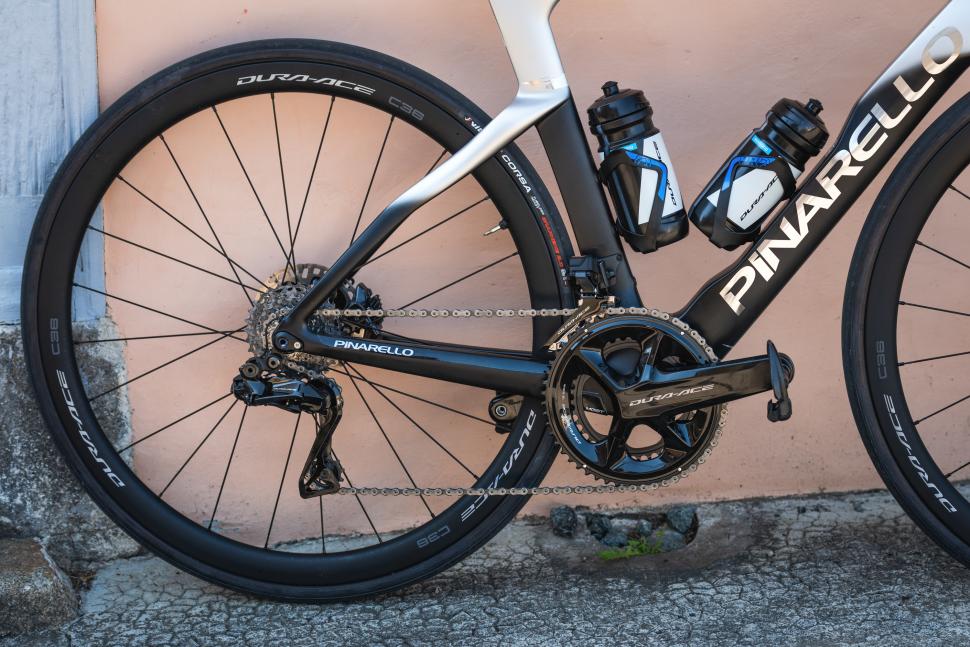
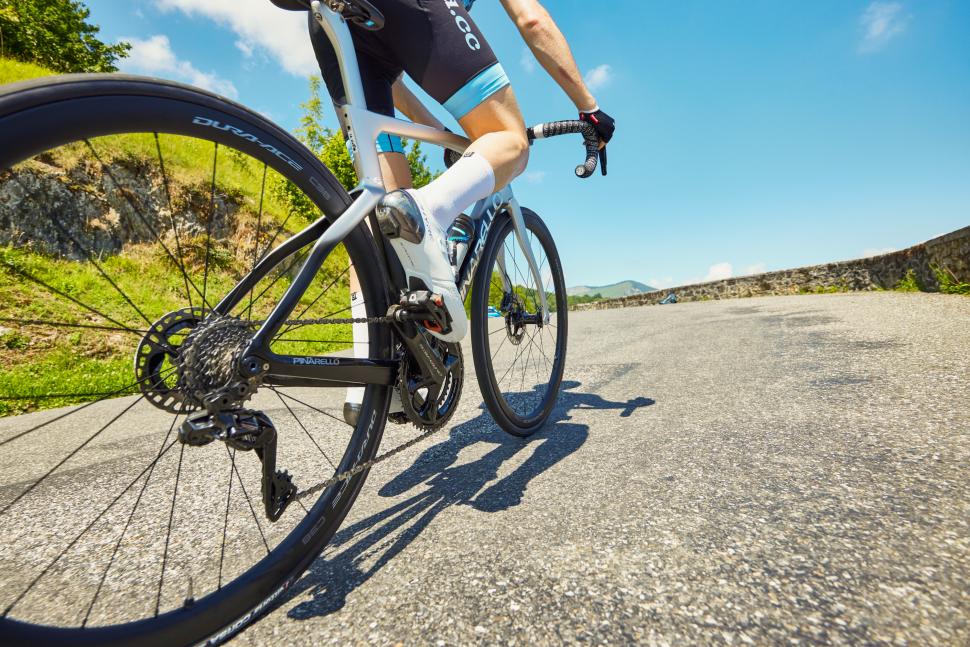

Add new comment
1 comments
I'd be surprised if the calipers are not interchangeable with existing ones. AFAIK the GRX ones support servowave and are just rebadged R8000 Ultegra.
Shimano disc brakes have been pretty standard for years to the point where you can run Road levers against MTB calipers and vice versa.